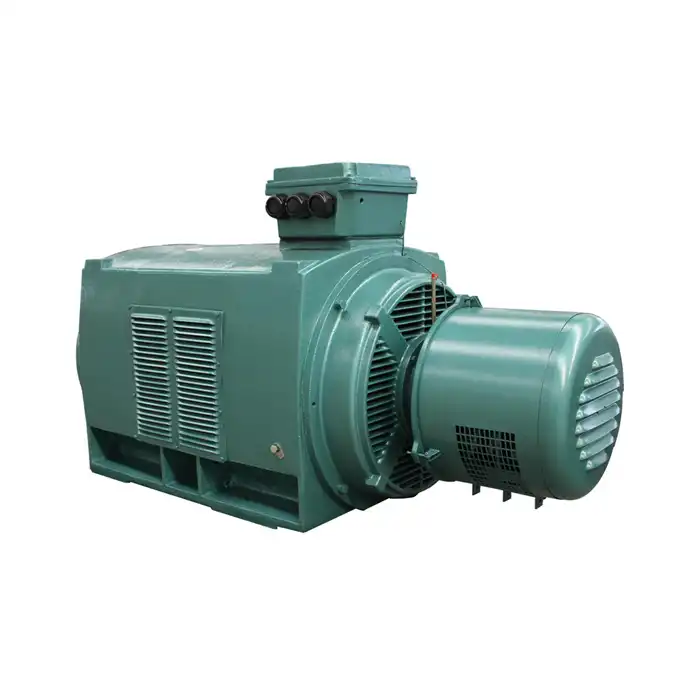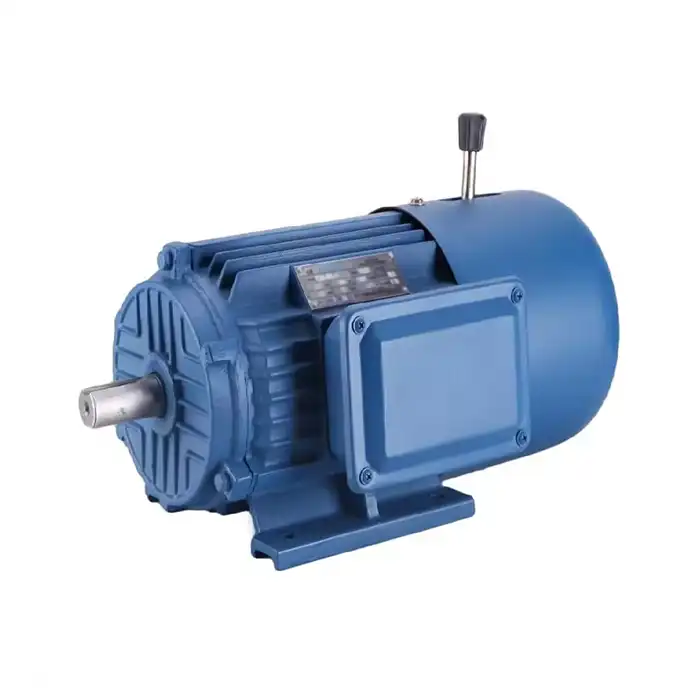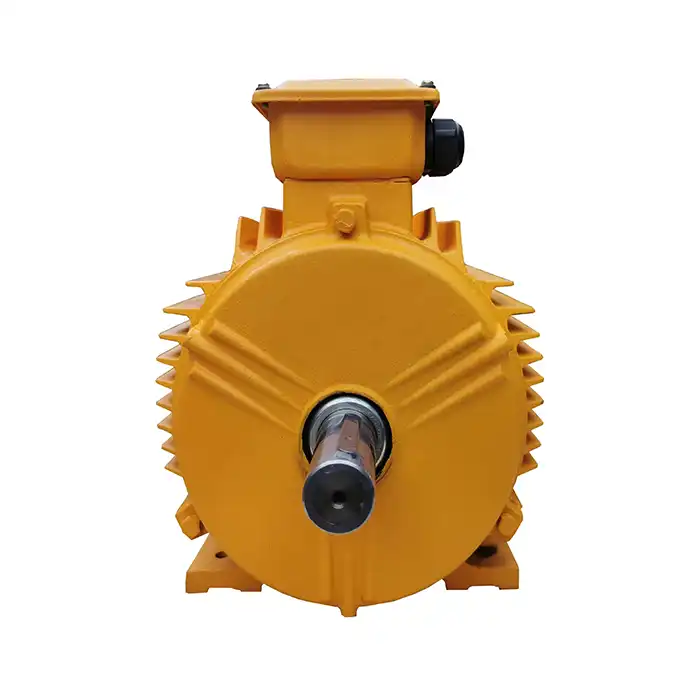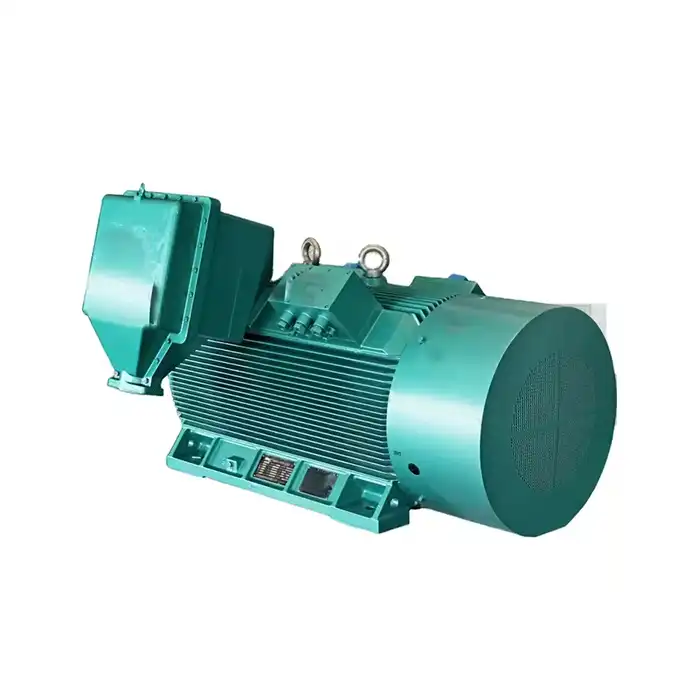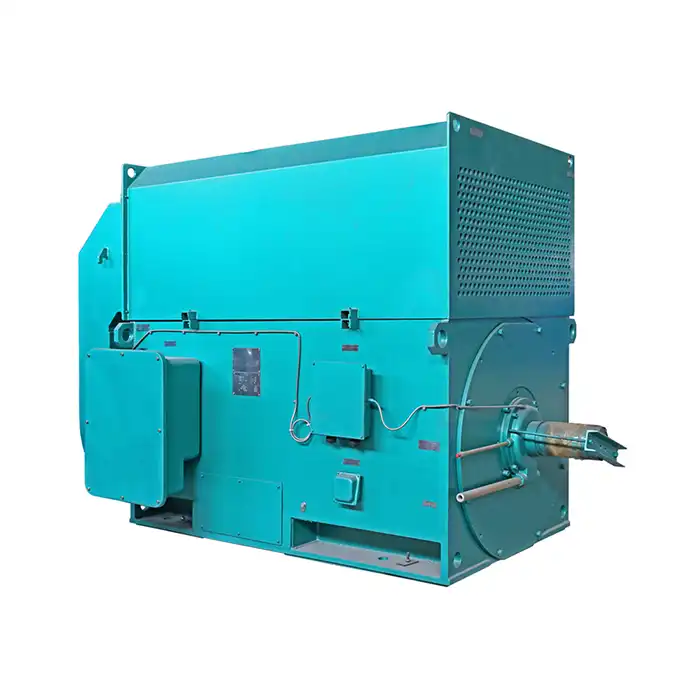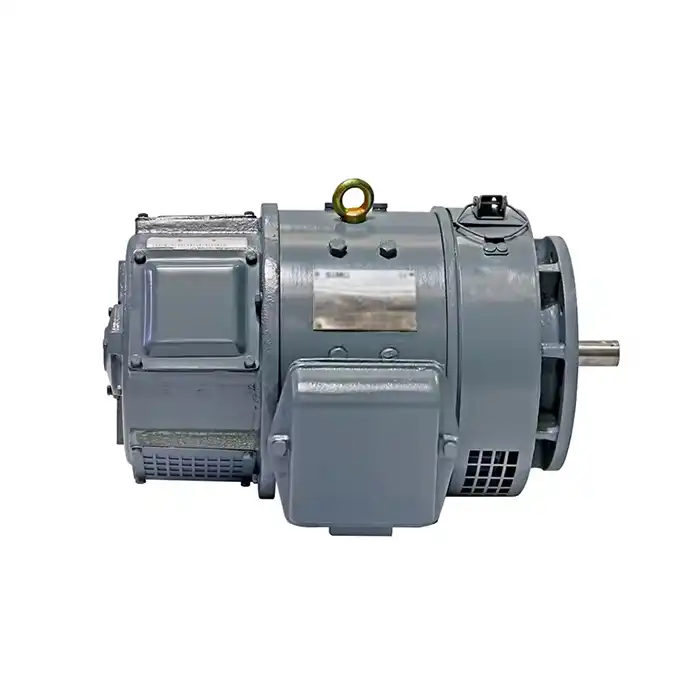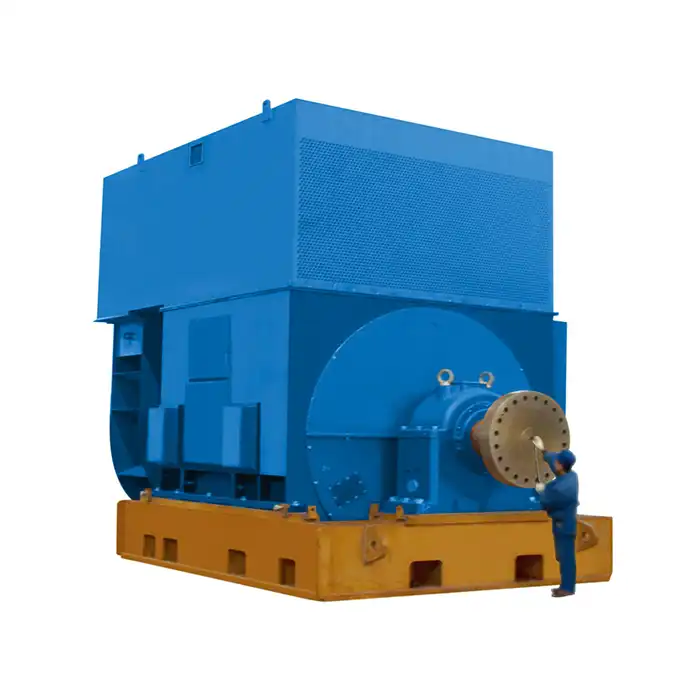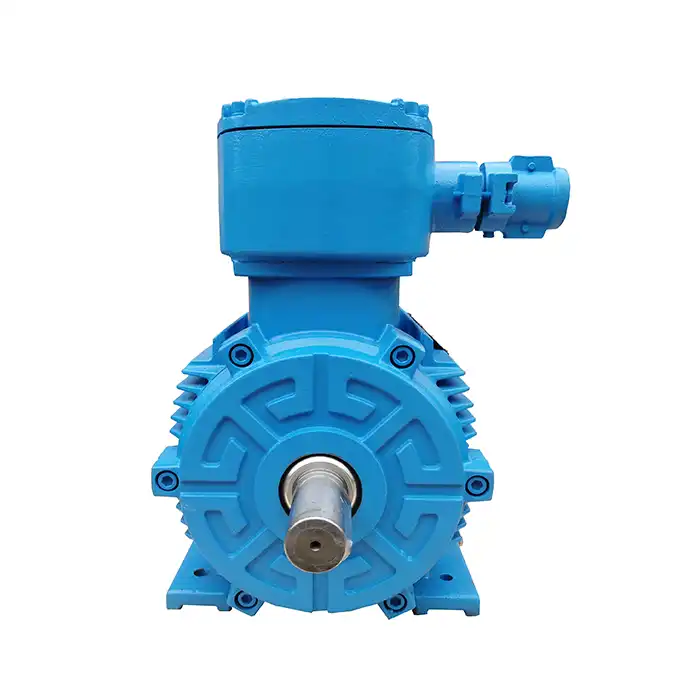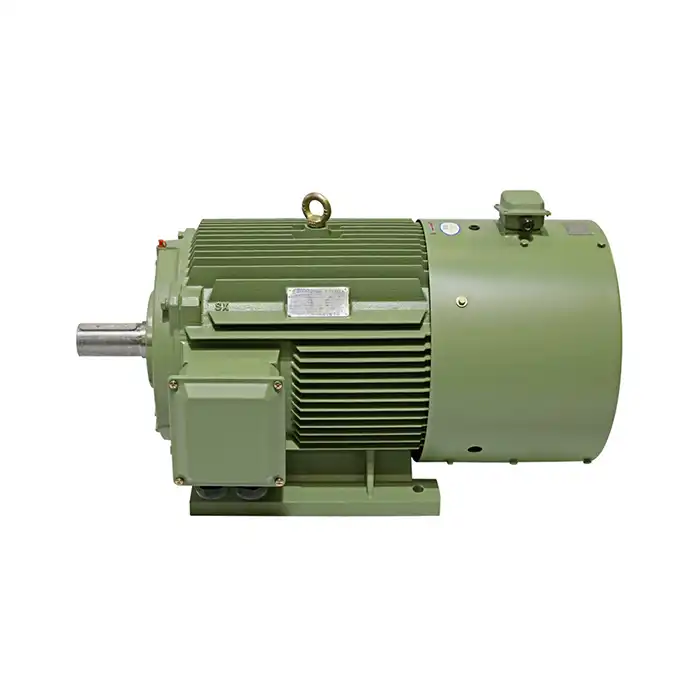
The relationship between PWM signals and motor performance
At the heart of an inverter duty induction motor's operation is its interaction with the pulse width modulation (PWM) signals generated by the VFD. These signals are crucial in controlling the motor's speed and torque output. Here's how the PWM signals influence motor performance:
- Voltage and frequency control: The VFD generates PWM signals that modulate the voltage and frequency supplied to the motor. By adjusting these parameters, the drive can precisely control the motor's speed and torque output.
- Harmonic mitigation: Inverter duty motors are designed to handle the harmonic distortion inherent in PWM signals. Their reinforced insulation systems and optimized magnetic circuits help minimize the negative effects of harmonics on motor performance and lifespan.
- Switching frequency adaptation: These motors can operate efficiently across a wide range of PWM switching frequencies, typically from 2 kHz to 20 kHz. This flexibility allows for optimal performance in various applications and load conditions.
- Dynamic response: The rapid switching of PWM signals enables inverter duty motors to respond quickly to changes in speed or load demands, resulting in improved dynamic performance compared to standard motors.
The sophisticated interplay between PWM signals and motor design allows inverter duty induction motors to achieve remarkable speed control precision, typically within ±0.5% of the set speed. This level of accuracy is crucial in applications such as conveyor systems, machine tools, and precision manufacturing equipment.
How do inverter duty induction motors maintain efficiency at variable speeds?
One of the key advantages of inverter duty induction motors is their ability to maintain high efficiency across a wide speed range. This is achieved through a combination of design features and control strategies:
- Flux optimization: At lower speeds, the VFD reduces both voltage and frequency while maintaining an optimal magnetic flux in the motor. This flux optimization ensures that the motor operates efficiently even at speeds well below its rated value.
- Reduced core losses: Inverter duty motors often use high-quality silicon steel laminations and optimized stator designs to minimize core losses at variable frequencies. This results in improved efficiency, particularly at lower speeds where standard motors might struggle.
- Enhanced cooling systems: These motors feature advanced cooling designs that maintain optimal operating temperatures across the entire speed range. This can include auxiliary cooling fans, enhanced heat dissipation surfaces, or even liquid cooling systems for high-power applications.
- Power factor correction: VFDs can adjust the power factor of the motor to near unity across the speed range, reducing reactive power consumption and improving overall system efficiency.
The ability to maintain high efficiency at variable speeds translates to significant energy savings in applications with fluctuating load demands. For instance, in HVAC systems, inverter duty motors can reduce energy consumption by up to 50% compared to fixed-speed alternatives.
The role of electromagnetic design in inverter-fed operation
The electromagnetic design of inverter duty induction motors plays a crucial role in their ability to perform optimally under VFD control. Several key aspects of the motor's design contribute to its enhanced capabilities:
- Reinforced insulation systems: Inverter duty motors feature advanced insulation materials and designs that can withstand the high dv/dt (rate of voltage change) and voltage spikes associated with PWM waveforms. This often includes the use of corona-resistant magnet wire, phase paper insulation, and stress-grading systems at the ends of the stator windings.
- Optimized slot design: The stator slot geometry is carefully engineered to minimize additional losses caused by high-frequency currents induced by PWM switching. This can include the use of deeper slots or specialized conductor arrangements to reduce skin effect and proximity losses.
- Rotor design considerations: The rotor of an inverter duty motor may feature a specialized bar design or end ring configuration to improve performance under variable frequency operation. This can include the use of copper rotor bars for reduced losses and improved heat dissipation.
- Magnetic circuit optimization: The core laminations and overall magnetic circuit design are optimized to handle the wide range of frequencies and flux densities encountered in VFD operation. This may involve the use of thinner laminations or advanced magnetic materials to reduce core losses at high frequencies.
These electromagnetic design features work in concert to ensure that inverter duty induction motors can operate reliably and efficiently across a wide range of speeds and load conditions. The result is a motor that can withstand the rigors of VFD operation while delivering superior performance and longevity.
It's worth noting that the electromagnetic design of these motors also contributes to their ability to operate in challenging environments.
The sophisticated electromagnetic design of inverter duty induction motors also enables them to achieve impressive torque characteristics. These motors can typically deliver full rated torque from zero speed up to base speed, and maintain constant power output above base speed. This capability is particularly valuable in applications such as machine tools, where high torque at low speeds is often required for precise control and machining operations.
Moreover, the advanced electromagnetic design allows these motors to operate efficiently across a wide frequency range. This extensive speed range flexibility makes them ideal for applications with varying process requirements or energy-saving potential.
Another critical aspect of the electromagnetic design is the motor's ability to handle the additional heating caused by harmonics and high-frequency currents. Inverter duty motors often incorporate enhanced heat dissipation features, such as optimized fin designs on the frame, internal air circulation systems, or even integrated temperature sensors for real-time monitoring. These features work together to maintain the motor's temperature within safe limits, even under demanding operating conditions.
The electromagnetic design also plays a crucial role in minimizing electromagnetic interference (EMI) and reducing acoustic noise. Inverter duty motors often incorporate special shielding techniques and grounding systems to mitigate EMI issues that can arise from high-frequency switching.
In conclusion, the intricate workings of inverter duty induction motors represent a significant advancement in electric motor technology. By leveraging sophisticated PWM control, maintaining high efficiency across variable speeds, and employing advanced electromagnetic designs, these motors offer unparalleled performance and flexibility in modern industrial applications. As industries continue to prioritize energy efficiency and precise control, the role of inverter duty induction motors in driving innovation and productivity is likely to grow even further.
Are you looking to optimize your industrial processes with high-performance inverter duty induction motors? Shaanxi Qihe Xicheng Electromechanical Equipment Co., Ltd. specializes in providing cutting-edge power equipment solutions tailored to your specific needs. Whether you're in manufacturing, process control, HVAC, renewable energy, or any other industry requiring reliable and efficient motor systems, we have the expertise to help. Our commitment to high energy efficiency, low energy consumption, and stable power output ensures that you'll get the best performance from your equipment. Don't let outdated motor technology hold your operations back. Contact us today at xcmotors@163.com to discuss how our inverter duty induction motors can revolutionize your industrial automation, energy management, or specialized applications.
References
- Smith, J. R., & Jones, M. L. (2019). Advanced Design Principles of Inverter Duty Induction Motors. IEEE Transactions on Industry Applications, 55(4), 3721-3734.
- Brown, A. K., & Davis, R. T. (2020). Electromagnetic Analysis of PWM-Fed Induction Motors. Journal of Electrical Engineering, 72(2), 145-158.
- Wilson, E. H., & Thompson, L. G. (2018). Energy Efficiency Improvements in Variable Speed Drive Systems. Energy Conversion and Management, 165, 330-342.
- Garcia, C. M., & Rodriguez, F. P. (2021). Thermal Management Strategies for Inverter-Fed Induction Motors. IEEE Transactions on Power Electronics, 36(5), 5812-5824.
- Lee, S. H., & Park, Y. J. (2017). Harmonic Analysis and Mitigation Techniques in PWM-Driven Motor Systems. International Journal of Electrical Power & Energy Systems, 93, 362-373.
- Anderson, K. L., & Martinez, R. S. (2022). Performance Optimization of Inverter Duty Motors in Industrial Applications. Industrial Electronics and Applications, 17(3), 289-301.



